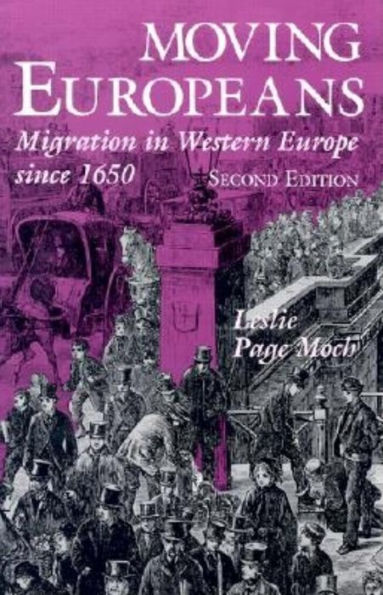"This reviewer concluded in his review of the first edition of this book (CH, Sep'93) that this provocative study affords a melding of the most current theory with engagingly written vignettes of the lived experience of those involved in the process. The second edition is even better. Like its predecessor, it delineates the forces behind human migration and traces major shifts in patterns of movement while putting a human face on the process with the imaginative personification of the migration experience. Much of the chapter structure is the same: an introduction to theoretical assumptions and working definitions; preindustrial migration; migration in the age of early industry; migration in an urbanized and industrialized world; and migration in the 20th century. The latter is where new ground is broken, incorporating what has happened over the last decade: much new research; shifts in national and European Union policies; new immigrants in a globalized world of changing politics, policies, and economies; the recognition of cosmopolitanism and hybridity. However, Moch (Michigan State Univ.) does not ponder the implications of the events of 9/11 on frontiers and movements as terrorism changes the landscape of international relations. This is an excellent volume with rich didactic footnotes, comprehensive bibliography, maps, and diagrams. Summing Up: Highly recommended. Most collections."
B. Osborne
This reviewer concluded in his review of the first edition of this book (CH, Sep'93) that this provocative study affords a melding of the most current theory with engagingly written vignettes of the lived experience of those involved in the process. The second edition is even better. Like its predecessor, it delineates the forces behind human migration and traces major shifts in patterns of movement while putting a human face on the process with the imaginative personification of the migration experience. Much of the chapter structure is the same: an introduction to theoretical assumptions and working definitions; preindustrial migration; migration in the age of early industry; migration in an urbanized and industrialized world; and migration in the 20th century. The latter is where new ground is broken, incorporating what has happened over the last decade: much new research; shifts in national and European Union policies; new immigrants in a globalized world of changing politics, policies, and economies; the recognition of cosmopolitanism and hybridity. However, Moch (Michigan State Univ.) does not ponder the implications of the events of 9/11 on frontiers and movements as terrorism changes the landscape of international relations. This is an excellent volume with rich didactic footnotes, comprehensive bibliography, maps, and diagrams. Summing Up: Highly recommended. Most collections.
B. Osborne]]>
This reviewer concluded in his review of the first edition of this book (CH, Sep'93) that this provocative study affords a melding of the most current theory with engagingly written vignettes of the lived experience of those involved in the process. The second edition is even better. Like its predecessor, it delineates the forces behind human migration and traces major shifts in patterns of movement while putting a human face on the process with the imaginative personification of the migration experience. Much of the chapter structure is the same: an introduction to theoretical assumptions and working definitions; preindustrial migration; migration in the age of early industry; migration in an urbanized and industrialized world; and migration in the 20th century. The latter is where new ground is broken, incorporating what has happened over the last decade: much new research; shifts in national and European Union policies; new immigrants in a globalized world of changing politics, policies, and economies; the recognition of cosmopolitanism and hybridity. However, Moch (Michigan State Univ.) does not ponder the implications of the events of 9/11 on frontiers and movements as terrorism changes the landscape of international relations. This is an excellent volume with rich didactic footnotes, comprehensive bibliography, maps, and diagrams. Summing Up: Highly recommended. Most collections.



